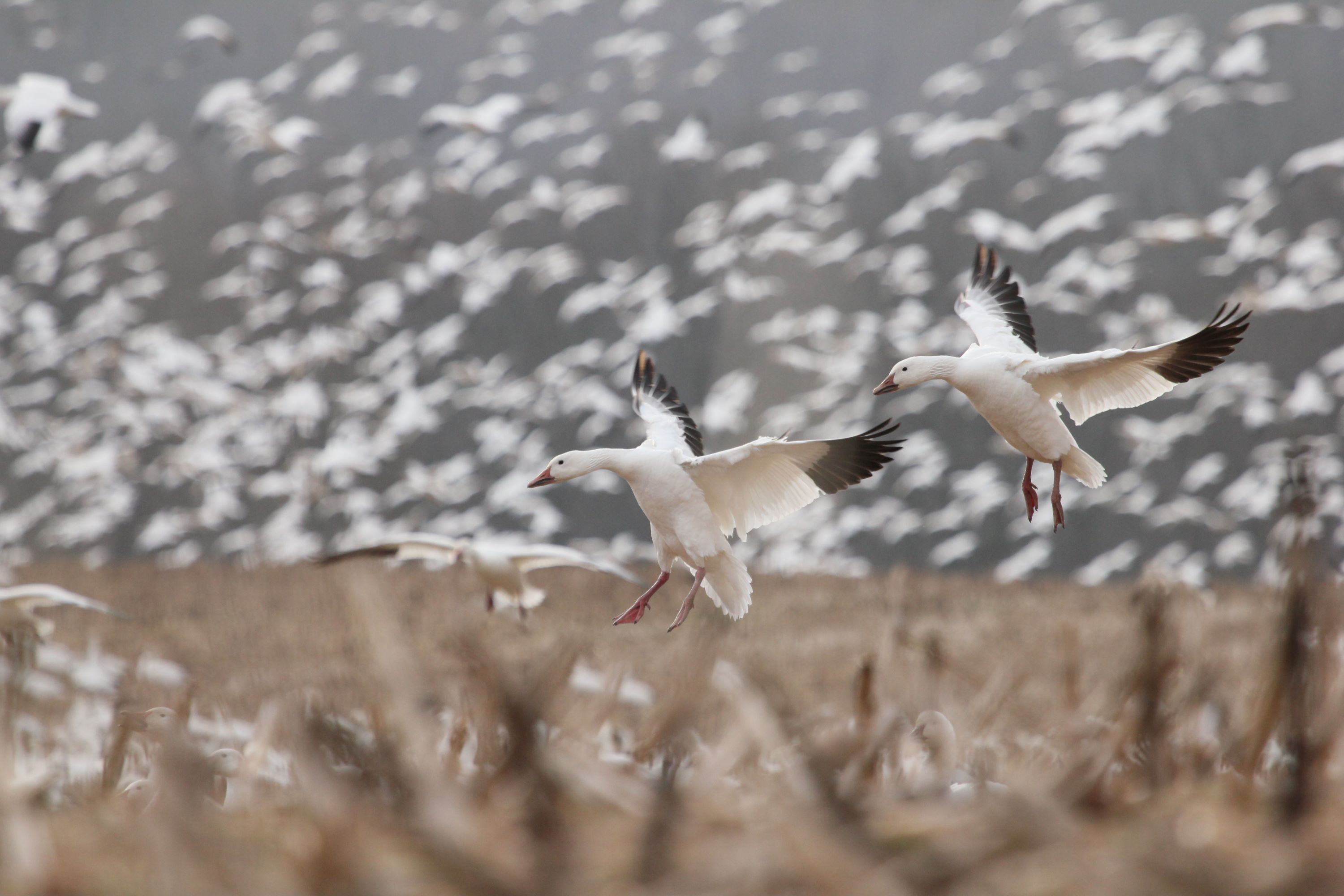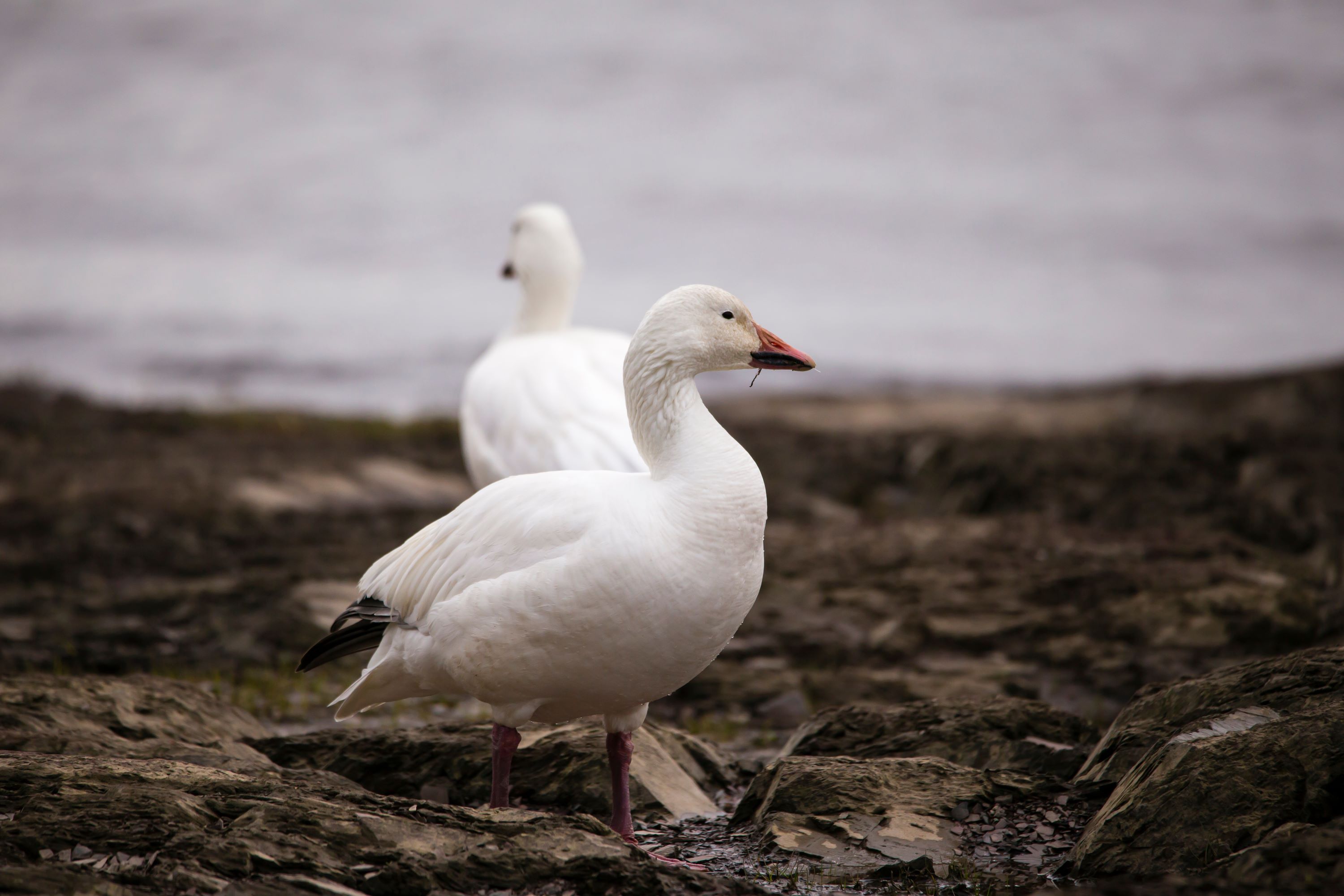
The Snow Goose: A Winter Wanderer in Utah's Skies
Introduction
The Snow Goose, an iconic symbol of the wild and untamed skies, is a species that captures the imagination of birdwatchers and nature enthusiasts alike. These birds, known for their striking white plumage and impressive migratory patterns, have a notable presence in Utah, especially during their seasonal migrations.
Description and Identification
The Snow Goose (Anser caerulescens) is a medium-sized goose, primarily recognized by its white plumage, which gives it its name. Adult Snow Geese have a black-tipped pink beak and black wingtips that are visible in flight. They are also known for their "blue morph" variant, which sports bluish-grey plumage with a white head. Juveniles are generally greyer in color, gaining their full white plumage as they mature.
Habitat and Range
Snow Geese breed in the Arctic regions of North America and migrate south to warmer climates in the United States during the winter. They favor marshes, coastal bays, wet grasslands, and agricultural fields. In Utah, these geese are commonly seen during their migration periods, with the Great Salt Lake and surrounding wetlands serving as crucial stopover points.

Migration Patterns
The migration of Snow Geese is an awe-inspiring phenomenon. These birds travel in large, noisy flocks that can number in the thousands. They are known for their impressive V-shaped flight formations, which enhance their aerodynamic efficiency. In Utah, their arrival is often heralded as a sign of the changing seasons, with large flocks visible in the skies, particularly in late fall and early spring.
Behavior and Social Structure
Snow Geese are highly social and vocal birds. Their loud, honking calls are a common sound in their flocks. They show strong fidelity to their mates and breeding areas. During migration and wintering, they form large, dense flocks, which can create a spectacular display against the backdrop of Utah's landscapes.
Diet and Foraging
Primarily herbivorous, Snow Geese feed on a variety of grasses, roots, and young shoots. They are also known to feed on agricultural crops, which sometimes leads to conflicts with farmers. In Utah, these geese can often be seen foraging in fields and wetlands, replenishing their energy for the long migratory journey.
Breeding and Nesting
Snow Geese breed in the high Arctic tundra, where they construct simple nests on the ground. The female typically lays 3-5 eggs, and both parents participate in raising the young. The goslings are precocial and are able to leave the nest soon after hatching, following their parents to feeding areas.
Conservation Status
While Snow Geese are not currently considered endangered, their populations are closely monitored. They face threats from habitat loss and climate change, which can affect their breeding and feeding grounds. Conservation efforts focus on preserving and managing wetlands and other critical habitats.
The Snow Goose in Utah
Utah plays a significant role in the life cycle of the Snow Goose, providing essential habitats during their migratory journey. Areas around the Great Salt Lake are particularly important, offering food and rest for these traveling birds. The sight of large flocks of Snow Geese is a highlight for birdwatchers and nature enthusiasts in Utah, offering a chance to observe these magnificent birds up close.
Conclusion
The Snow Goose, with its striking appearance and remarkable migratory habits, is a symbol of the dynamic and interconnected nature of ecosystems. For observers in Utah, the arrival and departure of these geese mark the rhythm of the seasons and remind us of the importance of conserving the natural habitats that support such incredible wildlife spectacles. Witnessing the Snow Goose in Utah is not just a birdwatching experience but a connection to the larger narrative of nature's cycles and migrations.